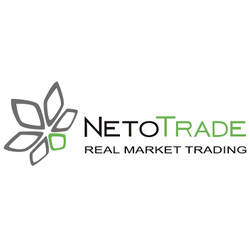Cryptocurrency revenue, a crucial metric for the health of crypto companies, is primarily generated through fees paid by users of the token or blockchain. This revenue stream provides essential capital for innovation and expansion. A company’s revenue growth can indicate its success and market position. Conversely, slow growth might signal underlying challenges. Among the top three crypto projects by revenue, Ethereum, Tron, and MakerDAO stand out.

A Deeper Dive into Crypto Revenue
Given the nascent and dynamic nature of the cryptocurrency landscape, the precise definition of “revenue” can vary. However, we’ve adopted the industry-standard definition established by Token Terminal.
In this context, “revenue” represents the total fees that directly accrue to a crypto company. This revenue is typically derived from transaction fees, including:
• Network Fees: Paid by users to miners or validators for processing transactions.
• Trading Fees: Charged by decentralized exchanges (DEXs) for token swaps.
• Lending Fees: Collected by lenders on DeFi platforms.
• Minting Fees: Used to create new NFTs.
While some fees might be distributed to users or network participants, a portion is retained by the crypto company. This retained portion, allocated towards organizational support, project development, or innovation, constitutes the “revenue” we’re focusing on.
Revenue and fees serve as powerful indicators of a cryptocurrency project’s success and long-term viability. Higher revenue figures often correlate with robust demand for the project, highlighting its practical utility and value proposition. Blockchain initiatives that consistently generate substantial revenue are more likely to weather the competitive landscape and endure over time.
Top Blockchains Ranked by Revenue

Source: create.vista.com
Ethereum: The Dominant Force
Ethereum, the pioneer of smart contracts, generates revenue primarily through network fees, commonly known as gas fees. These fees are levied on transactions conducted on the Ethereum blockchain and its layer-2 solutions. Following the implementation of EIP 1559 in 2021, Ethereum transitioned to a more efficient fee mechanism, replacing auctions with block-based and sender-specified maximum fees.
Driven by increased DeFi and NFT activity, Ethereum’s daily revenue peaked at over $35 million in March 2024. The memecoin craze further fueled this growth by driving up transaction volumes on the network. Ethereum’s revenue dynamics are closely intertwined with its price and market capitalization.
Tron: A Focus on Asian Markets
Tron, an Ethereum alternative with a strong presence in Asian markets, earns revenue by burning TRX tokens through transaction fees. Founded by Justin Sun, Tron utilizes a Delegated Proof of Stake (DPoS) consensus mechanism. Despite its centralized nature, Tron has emerged as the 14th largest blockchain network and a prominent player in DeFi, boasting a TVL of over $9 billion. However, its ecosystem remains relatively isolated, with a significant portion of its TVL concentrated in the JustLend lending protocol.
Sky (formerly MakerDAO): A DeFi Pioneer
Sky, one of the leading DeFi applications, generates revenue from interest paid by borrowers, liquidated collateral, and fees associated with maintaining the peg of its stablecoin, USDS. As both a lending platform and a money system, Sky’s revenue fluctuates, typically ranging below $1 million but occasionally reaching over $10 million. While its revenue may not be directly correlated with the price of its governance token, SKY, it is closely tied to the performance of Ethereum, given its reliance on the Ethereum blockchain.
Solana: The Rising Star
Solana, a high-performance blockchain network, has experienced rapid growth since 2023, surpassing Ethereum in several areas, including NFT trading volume and daily active users. Its vibrant DeFi ecosystem has attracted a TVL of around $5 billion. Despite charging lower fees than Ethereum, Solana’s potential for higher revenue lies in its ability to attract more users and increase transaction volume.
Avalanche: Efficiency and Interoperability
Avalanche, a layer-1 blockchain focused on efficiency and interoperability, generates revenue through transaction fees paid in AVAX. Its revenue surged to over $53 million in December 2023, primarily driven by the demand for inscription-based NFTs associated with a social experiment on the Trader Joe app. However, excluding this outlier, Avalanche’s monthly revenue typically falls below $3 million.
Takes for Investors
Cryptocurrency projects that consistently generate substantial revenue, like Ethereum and Solana, often signal strong demand and practical utility. This can indicate long-term resilience and growth potential. However, a comprehensive analysis of a crypto investment should also encompass key metrics such as daily active users (DAUs), daily active developers, and total value (market capitalization).
For a more in-depth exploration of these metrics, please refer to our dedicated pages on DAUs, revenue, daily active developers, and market capitalization. A thorough understanding of these elements is essential for making informed and strategic crypto investment decisions.
Learn from market wizards: Books to take your trading to the next level












